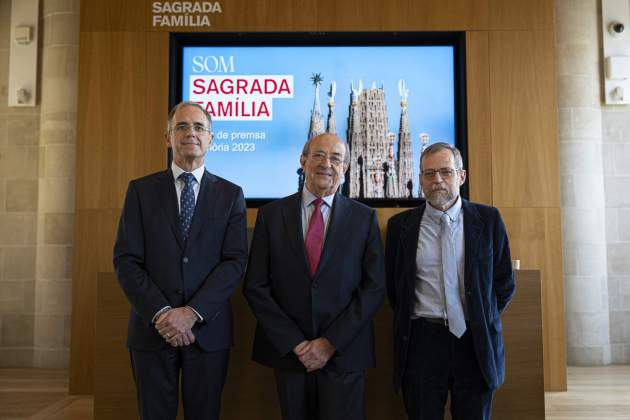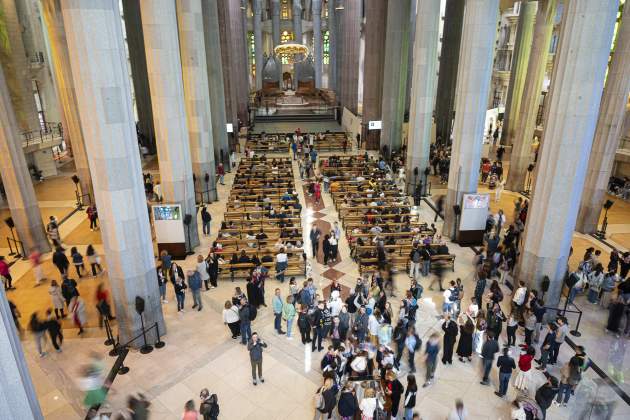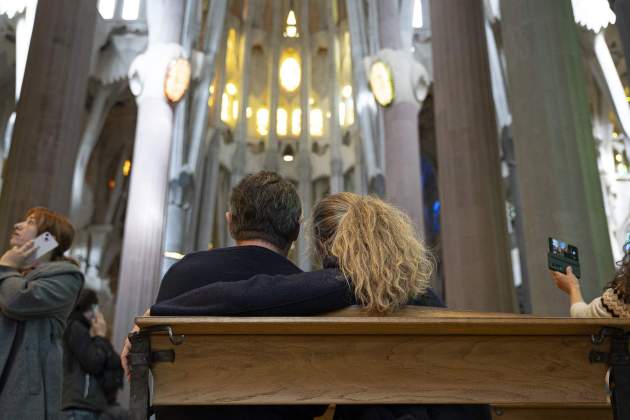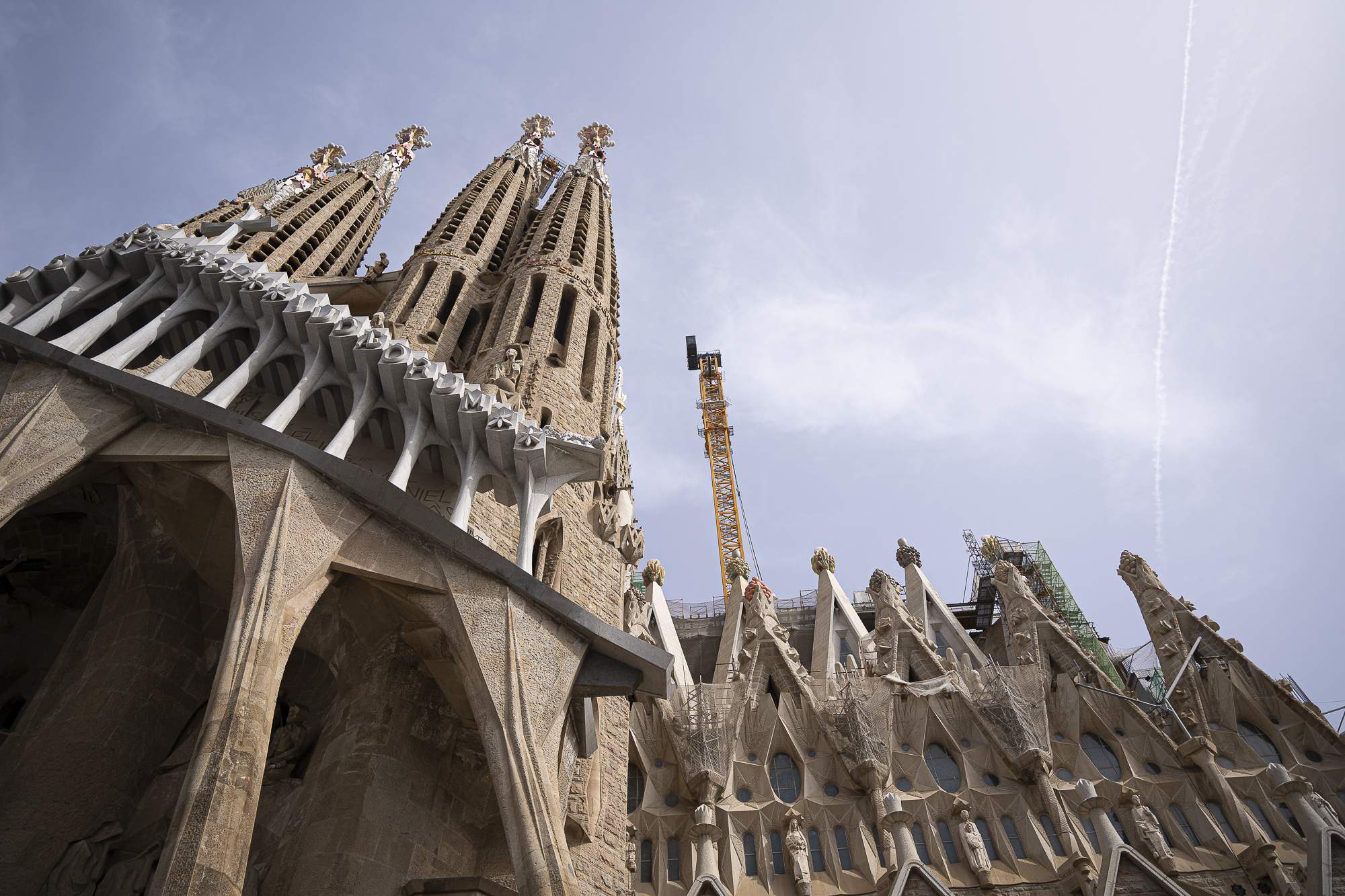When you consider that the completion of the Sagrada Família temple has been a challenge faced by the city of Barcelona for 142 years now, you would have to say that these days it seems to be making adequate progress. The target of finishing the work on architect Antoni Gaudí's modernista marvel by 2026 - the centenary of his death - has been definitively missed, due principally to the pandemic: the Covid lockdowns and recession led to a drop in income which in turn meant a paralysis of the works. But, as the Sagrada Família's Construction Board outlined to the media on March 20th, the rapid construction of the last two years is set to continue with two clear milestones to look forward to in 2025, the completion of the Tower of Jesus, 172.5 metres tall, the church's highest and central tower, and the completion of the Chapel of the Assumption along with other elements on its landward side, on Carrer Provença. While the final completion of the temple's main construction will certainly stretch into the next decade, the leaders of the project give assurances not only to Sagrada Família watchers, but also directly address the spirit of the church itself, when they voice the words: "T'acabarem" - "We will finish you".
That was stated by the chair of the Construction Board, Esteve Camps, in the presentation of the 2023 Annual Report, detailing aspects of the current situation of the temple. Camps, who recalled that the specific annual press conference on construction will be held in September, did announce that the temple is already in its "final phase" and reiterated the desire to complete it "within a decade", as already announced in 2023. He did not, however, clarify whether he is maintaining the same 10-year count he began last year or whether it is a decade from 2024.

In any case, the work is progressing and Camps has announced that his desire of the moment "is none other than to say 'T'acabarem' - 'we'll finish you', it's the phrase we carry in our hearts". The numbers support this desire, as 4.7 million visitors passed through the turnstiles in 2023, 24.5% more than in 2022, which already means a regularization of the pre-pandemic situation. In addition, to the momentum of recent years, crowned in 2023 with the inauguration of the towers of the evangelists Matthew and John, are the works completed last year such as the completion of the basements and the slab on which the Chapel of the Assumption will rest, the completion of the lanterns on the lateral roofs and the restoration of the pinnacles of the towers on the Nativity facade, the first of which were built almost a hundred years ago.
Inauguration of the Tower of Jesus in 2026
Those works will progress this year and next with the construction and completion of the Chapel of the Assumption and the Tower of Jesus, although the latter will culminate "with a possible inauguration at the beginning of 2026, the year of the centenary of the death of Gaudí". Once these structures are finished, which will also mean the completion of the entire rear part of the temple (that facing the landward street, Carrer Provença), Camps is optimistic about the final completion, since from that point, all efforts will be able to be devoted to the construction of the Glory Facade, which overlooks Carrer de Mallorca on the seaward side. That is the major part pending construction, and also the most controversial due to the possible impact on the residents of the buildings just across the street.

In any case, it must be borne in mind that when the temple construction team talk about finishing the work, they always talk about its "verticalitat", the vertical structures - that is to say, everything that is part of the entire Eixample block on which it is situated, and not the deployment of the controversial grand staircase on Carrer Mallorca. "At the moment, the commitment is to finish Carrer Provença and the Tower of Jesus by 2025, although the inauguration of the tower will take place in 2026", explained Camps, to add that once these works are completed, the emphasis will be moved to work on the Glory Façade, again "in its verticality, which is what we have permission for today", adding that "in ten years we understand that there will be time" to construct this facade. "The hope is that in ten years it will be finished, but it is still a hope", he added.
Of course, Camps pointed out that when he talks about the part of the work on Carrer Mallorca, he excludes "the construction of the bridge and the final paraboloids", whose permission is still pending. And of course, without renouncing the controversial staircase: "We follow to the letter what Antoni Gaudí told us, that is why we are his heirs". In any case, on that issue, Camps asserted that "on the negotiation of the bridge, it must be the public administration that says how it should be done, because I cannot tell a resident to leave, it must be the administration ". In this regard, Camps was optimistic about reaching an agreement with the Barcelona city council to resolve the issue.
First contacts with Collboni
In fact, Camps himself detailed that Jaume Collboni, mayor of Barcelona since last spring, accompanied by the district councillor, Jordi Valls, have already made a first contact under the current municipal government to begin addressing the issue: "They came to the basilica in person to find out in situ the real situation of the project". The first meeting with the municipal government served to "ratify" the steps that had been pending since the previous council mandate: "setting up the working commissions" to address the issue of the staircase and the foreseeable expropriation of residents' homes. Of course, the Sagrada Família remains committed to building the staircase.

"We cannot give up Antoni Gaudí's project, which in 1915, in the plan presented to the Barcelona city council, featured the staircase in plans signed by him," said Camps, adding that despite "not giving up on it", they are "open to negotiation". "The negotiation is pending", said Camps who preferred that before talking about expropriations it was necessary to first "know who will be affected by them and what proportion is the city council's and what is ours", to conclude that, in any case, "we will understand each other, it's a matter of dialogue".

